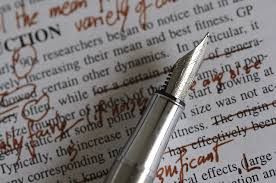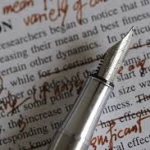
All You Need To Know About Line Editing
 All You Need To Know About Line Editing
All You Need To Know About Line Editing
By Jen Matera. Reposted with permission from Write Divas
When I saw that I was writing an article about line editing, I laughed out loud. And then I panicked. Line editing has been a sort of abstract concept to me, something in the periphery that I never quite understood.
For me, editing started out as a very definitive exercise; my first editing experience was beta reading for a friend, and I would correct her grammar and punctuation and watch for typos and misused words because that kind of stuff just came naturally. We would talk about storylines and plot holes and character voices and such, but it never occurred to me early on that we were developing her story.
Later, when I read for more friends, I’d start picking up on additional things like plot and timeline consistency, point of view and character tones, story arcs, and conflict. But even then, it all fell under the ‘editing’ umbrella, and I didn’t give it another thought. If something seemed off, the author should know about it and it was my job to tell her.
It wasn’t until I decided to pursue editing as a profession that I learned all these different concepts fell under specific subheadings of editing. And I realized just how much I still had to learn. There was proofreading, copy editing, content editing, developmental editing, line editing… I’m sure if I search, I could come up with terms I’ve never heard of before. And depending on the editor or publishing house, these terms can become almost interchangeable.
As I may have mentioned in my first Divas on Editing article, my strength is copy editing. I love copy-editing because I tend to think in concrete concepts like right and wrong, yes and no. So line editing is, by far, the most abstract—simply because it’s a different thing to everyone you ask.
Of course, I’m being facetious; there are constants in common to just about every definition or explanation of line editing you can find. Line editing is most often described as such because the editor picks apart the manuscript—line by line—looking for consistency and adherence to a specific style. This is extremely meticulous work as the editor is often watching for overused or misused words, changes in tone or atmosphere, and sentence and paragraph structure.
But there are just as many variations to the definition. I’ve seen line editing described as focusing on the prose: sentence flow, word choice, voice, style… writing as a craft. Some editors describe it as cutting the fat—getting rid of any unnecessary words and using all remaining words to their fullest potential. In my research, I found one editor who suggests line editing steps to tighten up prose that include looking at each sentence you’ve written individually, eliminating all clichés and idioms, and using your thesaurus for dead verbs. I’ve even seen some explanations of line editing that seemed to combine all of the above with some of the mechanical features of copy editing.
Ultimately, the theme is that line editing looks at your manuscript at an almost molecular level, selecting each word, phrase, sentence, and paragraph and arranging them in the best way possible in order to draw a response from your readers. The more I research line editing, the more I realize that it’s like doing a copy edit on the less-than-technical stuff. Because copy editing, at least for me, is done at a word level, but hits the mechanical parts of writing: the spelling, the punctuation, the grammar, etc. Line editing is its evil, I mean creative, twin.
Where copy editing focuses on clarity and consistency, line editing focuses on style and flow.
So, is line editing its own item on the menu, or is it something that most editors do automatically as they’re editing because, well, they’re editors? I think the answer is a little of both.
When I’m working on a copy edit, I often come across words and phrases and wonder if perhaps there aren’t more fitting choices. I’m not going to skip over them and not alert my author simply because they don’t fall under the copy edit heading. However, I’m not specifically analyzing each word and phrase to ensure it’s used to its full potential, either. Do content editors look at things like overused words and sentence flow as they are editing? Of course, they do, but perhaps not at a molecular level the way line editing does.